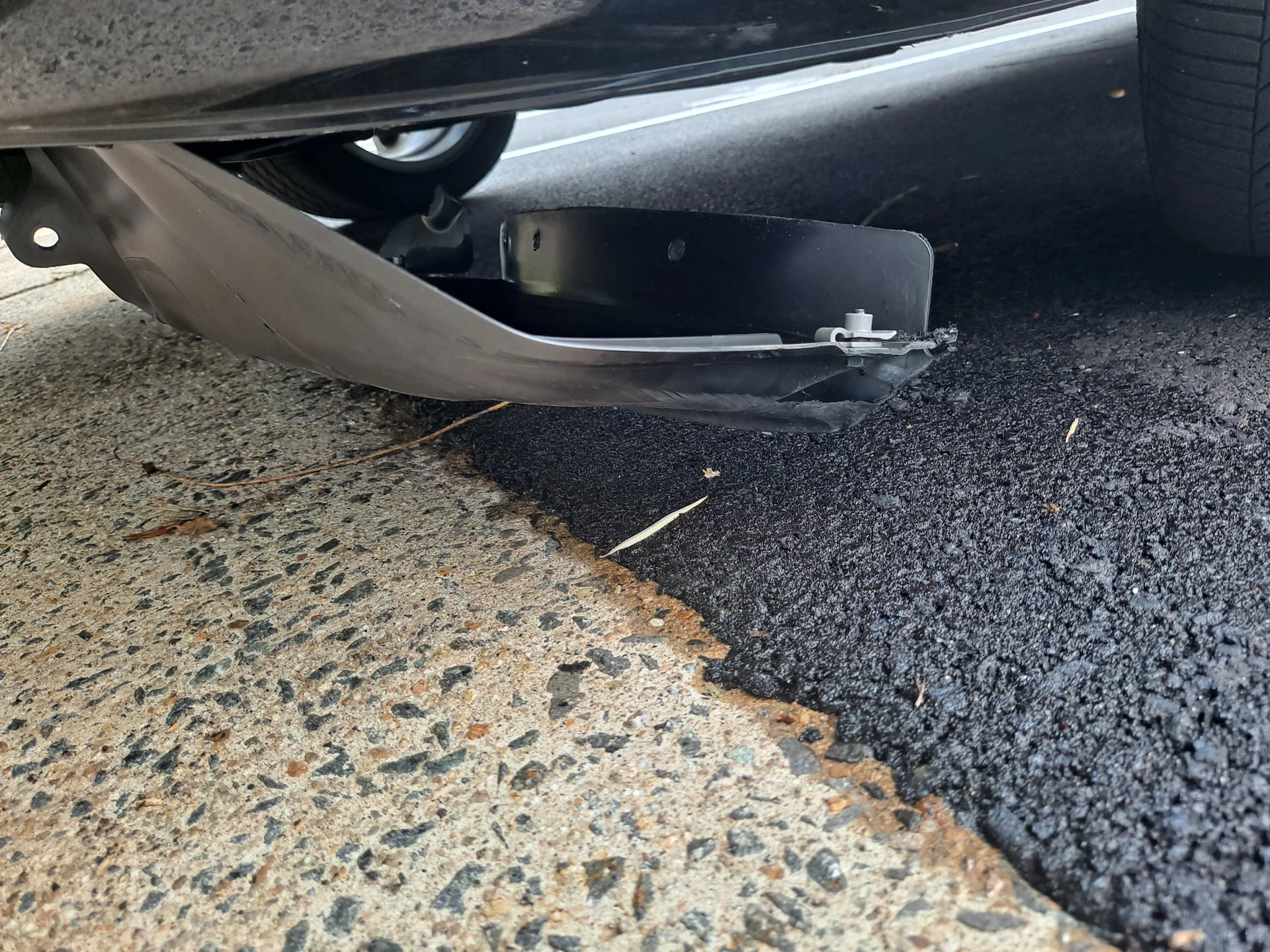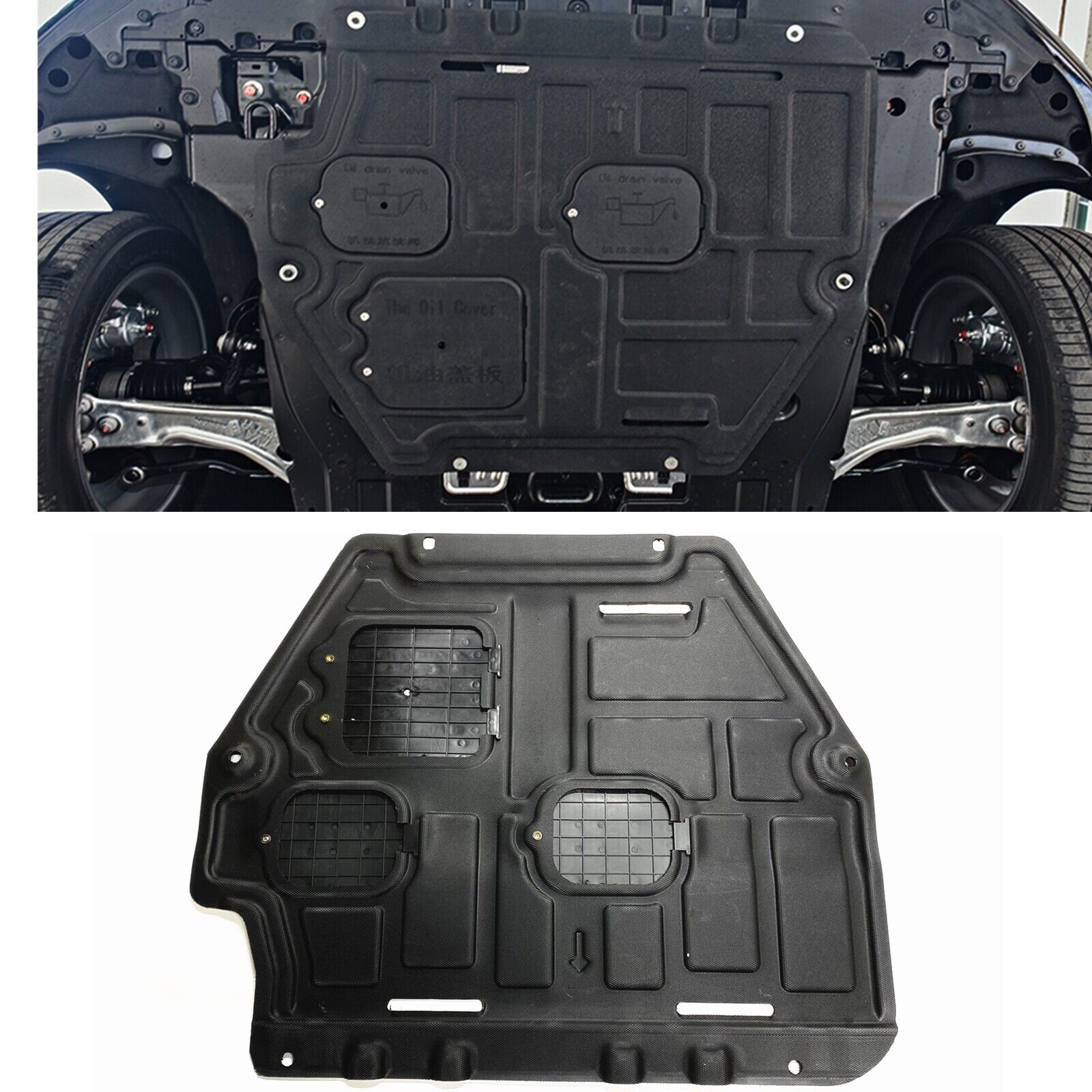

I. Introduction
As you navigate the roads, your vehicle‘s undercarriage is constantly exposed to a barrage of debris, water, and other hazards. While your car’s body and suspension system provide some protection, a critical component often overlooked is the engine splash guard. This unsung hero plays a vital role in safeguarding your vehicle’s vital components from harm, ensuring a smooth and trouble-free ride.
A. Definition of an Engine Splash Guard
An engine splash guard, also known as an engine underguard or skid plate, is a protective shield mounted underneath the vehicle’s engine compartment. It acts as a barrier between the engine and the harsh elements, deflecting debris, rocks, and road grime that could cause damage.
B. Importance of Protecting the Engine Undercarriage
The engine undercarriage houses a multitude of essential components, including the engine, transmission, driveshaft, electrical wiring, and exhaust system. These components are crucial for the vehicle’s operation and can be costly to repair or replace if damaged.
C. Benefits of Using an Engine Splash Guard
Installing an engine splash guard offers a range of benefits that extend beyond protecting your vehicle’s undercarriage:
-
Prevents Damage from Debris: Engine splash guards shield the engine and other components from rocks, sticks, and other debris that can cause cracks, dents, or punctures.
-
Reduces Water Ingress: Water and moisture can lead to corrosion, rust, and electrical shorts. Engine splash guards help prevent water from splashing up onto the engine and other components.
-
Minimizes Noise from Road Debris: The impact of road debris against the undercarriage can create unpleasant noises. Engine splash guards reduce this noise, contributing to a quieter and more comfortable driving experience.
-
Improves Fuel Efficiency: By reducing aerodynamic drag caused by airflow under the vehicle, engine splash guards can contribute to a slight improvement in fuel economy.
-
Enhances Appearance: Engine splash guards can add a touch of sleekness and protection to the vehicle’s undercarriage, enhancing its overall appearance.

II. Types of Engine Splash Guards
Engine splash guards come in a variety of materials and designs to suit different vehicles and needs:
A. Material
-
Plastic: Plastic engine splash guards are lightweight, affordable, and easy to install. However, they may not offer the same level of durability as metal guards.
-
Aluminum: Aluminum engine splash guards are more durable and corrosion-resistant than plastic guards. They are also lighter than steel guards.
-
Other Materials: Some engine splash guards may be made from steel, composite materials, or a combination of materials.
B. Design
-
Universal: Universal engine splash guards are designed to fit a wide range of vehicles. They may require some modification to ensure a proper fit.
-
Vehicle-Specific: Vehicle-specific engine splash guards are designed to fit a particular make and model of vehicle. They offer a more precise fit and easier installation.

III. Choosing the Right Engine Splash Guard
Selecting the right engine splash guard for your vehicle is crucial for optimal protection and performance:
A. Compatibility with Your Vehicle
Ensure the chosen engine splash guard is compatible with your vehicle’s make, model, and year. Check the manufacturer’s specifications and compatibility charts to avoid any fitment issues.
B. Material and Durability
Consider the material and durability of the engine splash guard. For heavier-duty protection, aluminum or steel guards may be a better choice. Plastic guards are more affordable but may not withstand severe impacts.
C. Protection Level
Assess the level of protection required based on your driving habits and terrain. If you frequently drive on rough roads or in areas with debris, a more robust guard may be necessary.
D. Installation Requirements
Evaluate the installation requirements of the engine splash guard. Some guards require minimal tools and mechanical skills, while others may demand more expertise.
E. Price
Set a budget for the engine splash guard and compare prices from different manufacturers. Consider the value proposition of different options based on material, durability, and features.

IV. Benefits of Using an Engine Splash Guard
In addition to the primary benefits mentioned earlier, engine splash guards offer several other advantages:
-
Extends the Lifespan of Components: By protecting the engine and other components from damage, engine splash guards can extend their lifespan and reduce the need for costly repairs.
-
Maintains Resale Value: A well-protected undercarriage can contribute to a higher resale value for your vehicle.
-
Peace of Mind: Knowing that your vehicle’s engine and vital components are shielded from harm provides peace of mind and reduces the risk of unexpected breakdowns.
V. Installation of an Engine Splash Guard
Installing an engine splash guard is generally straightforward and can be done at home with basic tools and mechanical knowledge. However, always consult your vehicle’s owner’s manual for specific instructions. Here’s a general outline:
A. Safety Precautions
- Park the vehicle on a level surface and engage the parking brake.
- Wear safety glasses and gloves to protect yourself from potential hazards.
- Ensure the engine is cool to the touch before starting the installation.
B. Locating the Mounting Points
Identify the designated mounting points on the undercarriage frame for the engine splash guard. These will typically be pre-drilled holes or threaded inserts.
C. Preparing the Installation Area
Clean the installation area thoroughly to remove dirt, debris, and rust. This ensures a secure and proper fit for the engine splash guard.
D. Attaching the Splash Guard
Line up the engine splash guard with the designated mounting points. Use the provided hardware (bolts, nuts, washers) to securely fasten the guard to the vehicle’s frame. Tighten the fasteners gradually and evenly to avoid over-tightening.
E. Final Checks and Adjustments
Double-check all fasteners for tightness. Ensure there are no gaps between the engine splash guard and the undercarriage. Test for any interference with moving parts like the steering or suspension.
VI. Maintenance of an Engine Splash Guard
Proper maintenance of your engine splash guard ensures optimal performance and longevity:
A. Regular Inspection
Periodically inspect the engine splash guard for signs of damage, cracks, or loose fasteners. This is particularly important after driving on rough roads or encountering significant debris.
B. Cleaning and Removing Debris
Clean the engine splash guard with a mild soap solution to remove dirt, grime, and build-up that can impede airflow and accelerate corrosion. Regularly remove any accumulated debris that may trap moisture or cause damage.
C. Replacing the Splash Guard if Necessary
If the engine splash guard is severely damaged or cracked beyond repair, it’s crucial to replace it with a new one to maintain adequate protection for the undercarriage.
VII. Troubleshooting Engine Splash Guard Issues
While engine splash guards are generally durable, occasional issues might arise:
A. Identifying Common Problems
Common problems include rattling noises indicating loose fasteners, or a sagging guard due to wear or improper installation.
B. Tightening Loose Fasteners
Re-tighten any loose fasteners to ensure the engine splash guard remains securely attached. Utilize the proper torque specifications if provided.
C. Repairing or Replacing Damaged Parts
For minor cracks or damage, consider repair options if feasible. Otherwise, replace the engine splash guard with a compatible new one.
D. Seeking Professional Assistance
If you encounter any difficulties with installation, troubleshooting, or repairs, don’t hesitate to seek help from a qualified mechanic.
VIII. Additional Considerations
Beyond the core functionality, consider these additional points when selecting and maintaining your engine splash guard:
A. Warranty and Customer Support
Choose a splash guard with a reliable warranty and consider customer support options in case of any issues with the product.
B. Environmental Impact of Materials
Consider the environmental impact of the guard’s material. Opt for recyclable materials like aluminum or choose manufacturers with sustainable practices.
C. Recycling and Disposal Options
Research proper disposal methods for old or damaged engine splash guards to minimize environmental impact. Some manufacturers or recycling centers may accept these materials.
IX. The Future of Engine Splash Guards
The future of engine splash guards holds promise for even better protection and functionality:
A. Advancements in Materials and Design
Future designs might utilize lighter and stronger materials like composites, offering enhanced protection with reduced weight. Advancements in design could lead to splash guards that integrate seamlessly with the vehicle’s undercarriage, improving aerodynamics and fuel efficiency.
B. Integration with Other Vehicle Components
Engine splash guards could potentially be integrated with sensors or monitoring systems that detect damage or debris buildup, alerting the driver to potential issues.
C. Potential for Smart Features and Sensors
The future might see engine splash guards equipped with smart features like self-adjusting components to optimize aerodynamic performance based on driving conditions.
X. Conclusion
Engine splash guards represent a simple yet effective way to safeguard your vehicle’s undercarriage from the elements. They offer a range of benefits, from preventing damage to vital components to enhancing fuel efficiency and overall appearance. By choosing the right engine splash guard for your vehicle and maintaining it properly, you can contribute to a longer lifespan for your car and a smoother, more protected driving experience.
Leave a Reply